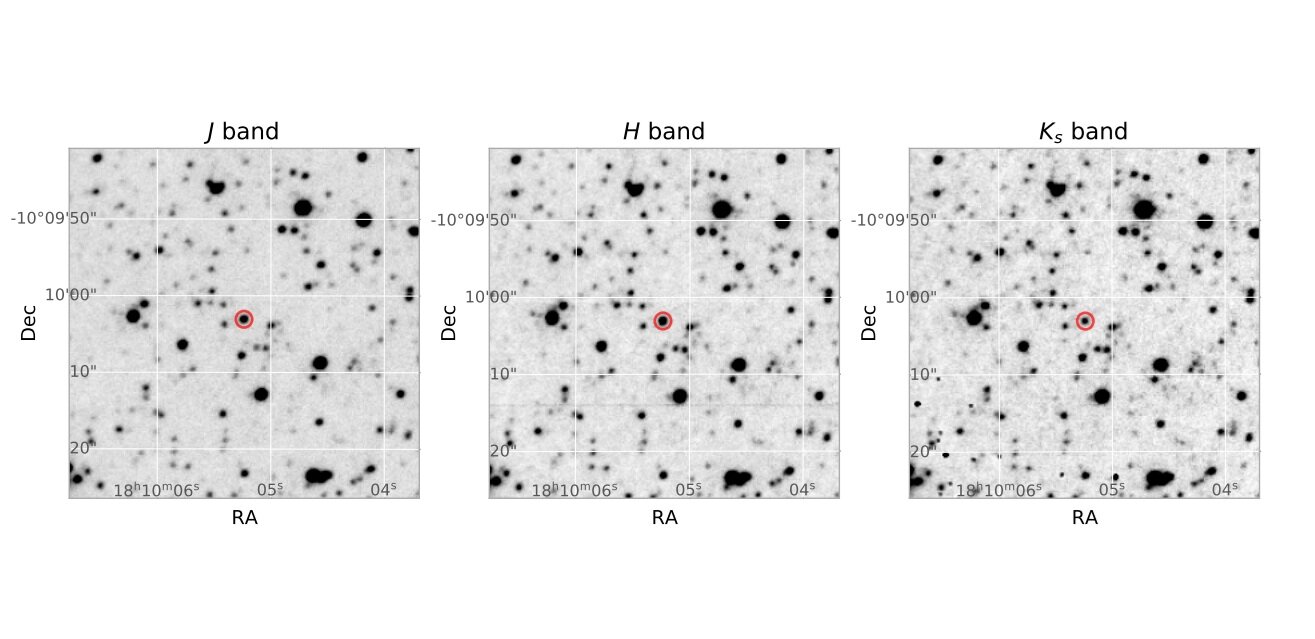Methane detected in the atmosphere of the nearest T dwarf
Using the 10.4-m Gran Telescopio Canarias (GTC), astronomers have detected methane in the atmosphere of WISEA J181006.18−101000.5—the closest T dwarf to Earth.
Brown dwarfs are intermediate objects between planets and stars. Astronomers generally agree that they are substellar objects occupying the mass range between 13 and 80 Jupiter masses. One subclass of brown dwarfs (with effective temperatures between 500 and 1,500 K) is known as T dwarfs, and represents the coolest and least luminous substellar objects so far detected.
Studies of T dwarfs could help astronomers better understand objects near the disputed planet/star boundary, for instance, giant exoplanets. However, although many brown dwarfs have been detected to date, T dwarfs are not so common, as only about 400 such objects have been identified.
WISEA J181006.18−101000.5, or WISE1810 for short, is a metal-poor T dwarf at just 29 light years from the Earth. It has a radius of about 0.65 Jupiter radii and is some 17 times more massive than Jupiter. The effective temperature of WISE1810 is estimated to be within the range of 800–1,300 K.
Previous low-resolution near-infrared and mid-infrared observations of WISE1810 have suggested that it has a significantly chemically modified atmosphere dominated by hydrogen and water vapour. However, no evidence of methane has been found, which is a defining characteristic molecule of the T-dwarf type.

This has changed with the recent publication of a new study 1 conducted by a team of astronomers led by Jerry Zhang of the University of La Laguna, Spain. They obtained new near-infrared photometry of WISE1810 with GTC’s Espectrógrafo Multiobjeto Infra-Rojo (EMIR), which resulted in clear detection of methane in the atmosphere of this T dwarf.
The detection of methane further supports the classification of WISE1810 as T-type instead of L-type, which was suggested by some studies. The researchers add that no evidence of carbon monoxide and potassium has been found in the atmosphere of this object.
Based on the collected data, the carbon abundance for WISE1810 was estimated to be -1.5 dex, which inferred a metallicity at a level of -1.7 dex. The effective temperature of the T dwarf was constrained to be about 1,000 K.
The authors explain that the low metallicity of WISE1810 probably accounts majorly for the non-detection of atomic potassium but a lower temperature could also boost this effect.
The study also found that WISE1810 has a heliocentric velocity of -83 km/s. This finding indicates that the object is more likely associated with the Milky Way‘s thick disk rather than the halo, despite its very low metallicity.
References
- Jerry Jun-Yan Zhang, Nicolas Lodieu, Eduardo L. Martín, Pascal Tremblin, María Rosa Zapatero Osorio, Víctor J. S. Béjar, Nikola Vitas, Bartosz Gauza, Yakiv V. Pavlenko, Rafael Rebolo (2025) Detection of Methane in the Closest Extreme Metal-poor T Dwarf WISEA J181006.18-101000.5 arXiv arXiv:2503.22289 [astro-ph.SR] ↩